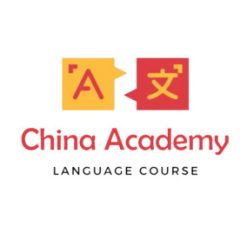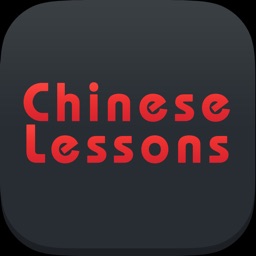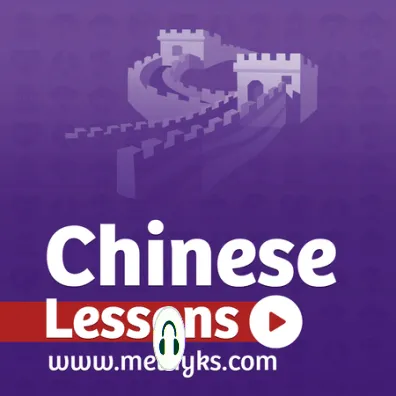While they may seem old-fashioned, textbooks are still a mainstay of a Mandarin learner’s success. Chinese language textbooks combine reading and listening practice, grammar lessons, and exercises–and wrap them all together in a format that provides systematic progression into language proficiency.
This article will arm you with some tips on how to effectively work with your Chinese textbook. Plus, at the end of this post, you’ll find a list of the best Chinese textbooks we think highly of.
Tips for Working with Chinese Textbooks
Once you’ve chosen the textbook that best suits your needs, how do you incorporate it into your Chinese learning curriculum? Follow these hacks to make the most of your new study companion.
Double down on listening
We can’t stress the importance of audio content enough. Make full use of the audio content and aim to listen to the texts and dialogs about ten times. Before you even get your book, be certain that it includes access to recordings.
A common problem for Chinese learners is not having enough listening and reading material to learn from. To ensure you get plenty of input and practice, acquire the beginner-level textbooks from several series. This will give you more audio content to work with.
Practice Chinese Vocabulary
As you go through your textbook, study the words from each lesson using Hack Chinese. It’s a proven way to memorize your book’s vocabulary and retain what you’ve learned long-term.
Hack Chinese will make your studies easier to manage. Since Hack Chinese schedules your vocabulary reviews for you, you don’t have to keep track of when to review vocabulary from different lessons. Using one of Hack Chinese’s premade lists will save you the time of inputting the new vocabulary words into a flashcard program yourself.
Have a study plan for each lesson
Start off your lesson by listening to the text and going through the new vocabulary for the first time on Hack Chinese. Listen to the text again. This time, identify unknown words in the text that aren’t specifically introduced as new vocabulary for the lesson. If these words aren’t already in your Hack Chinese list, add them now.
Listen to the text again, but this time, stop after each sentence and try to repeat what you’ve heard. Go slowly and be sure to focus on your pronunciation and tones. Afterward, try reading the text out loud twice on your own, without the audio. After having reviewed the vocabulary and listened to the audio for a few days, you should be ready for this.
Ideally, you need to combine self-study with in-class work. Going over the textbook lesson in the classroom or with an online tutor, you’ll have a chance to ask questions and practice speaking and pronunciation.
Revise regularly
Another critical problem for students is getting into the harmful habit of finishing a lesson and never returning to it, thinking that moving onto the next lesson is the best use of their time. Like anything you want to learn, you need to practice new ideas and concepts in Chinese many times before you can consider the material truly “yours.” Make sure you review your textbook lessons after you’ve finished them.
The Best Chinese Textbooks
With so many Chinese textbook series to choose from, you may be struggling to decide which to study from. Below are five Chinese textbooks that Hack Chinese recommends for English-speaking Mandarin learners.
Vocabulary lists from these textbooks are already available to study on Hack Chinese, so feel free to browse through them!
New Practical Chinese Reader
The New Practical Chinese Reader (NPCR) is a six-volume series of textbooks that provides students with lessons structured around key texts. The text is arranged with a dialogue at the start of each chapter which exposes the learner to language in more natural contexts focusing on practical, everyday expressions. This is helpful for those looking to quickly build up an active vocabulary.
Each chapter builds progressively on the last making the learning easier. Characters are introduced right away, from the very first chapters, and radicals (the components of Chinese characters) are clearly presented.
Here’s your pre-built Hack Chinese word list for the New Practical Chinese Reader series.
HSK Standard Course
HSK Standard Course is a nine-volume series that is designed around the HSK (the official Mandarin proficiency exam in China). This book is especially helpful for those getting ready for the HSK exam as it also has a workbook which provides practical exercises.
We should also note that the HSK is changing from its current six-level model to a new nine-level model. We have published this interactive HSK guide that covers all major changes and breaks down the differences between the old and the new HSK. We encourage you to check it out!
You can find the word list for the HSK Standard Course series on Hack Chinese here.
Boya Chinese
Boya Chinese is a series that is often used in intensive courses and is another popular book for Chinese instruction in China. If we compare the HSK Standard Course to Boya Chinese, the first is built based on the HSK vocabulary levels while the Boya series covers about twice as much vocabulary.
You can find Boya’s word list on Hack Chinese here.
Integrated Chinese
Integrated Chinese is a four-volume series designed specifically as the curriculum for 2 years of college study. These textbooks are very popular in North American colleges and universities and they are perfectly suited for absolute beginners.
Integrated Chinese provides many in-class and group exercises that help students practice speaking. Its many Chinese cultural lessons make the material more approachable.
The word list for Integrated Chinese is available on Hack Chinese here.
Developing Chinese
Developing Chinese is a collection of textbooks divided into three skill levels (elementary, intermediate, and advanced) and five series (comprehensive, listening, speaking, reading, and writing). Developing Chinese is a popular book in China for teaching Chinese as a second language.
The “comprehensive” series contains the main textbooks; the other four series offer the student additional material to hone specific skills. This series works well for students who want to seriously work on strengthening one or more of their abilities.
Developing Chinese’s word list is up on Hack Chinese here.
Final Thoughts
After choosing the Chinese textbook that fits you best, make full use of the media the textbook provides by returning to the material over time.
It’s important to remember that while a textbook is a helpful asset in your study routine, it is just one of the components of an effective, well-rounded study plan to learn Chinese. Even if you’re learning with the best Chinese textbooks, you need to make sure you’re incorporating other activities into your studies—like classroom instruction, podcasts or YouTube content, vocabulary practice. This balanced approach will help you address different language skills.






